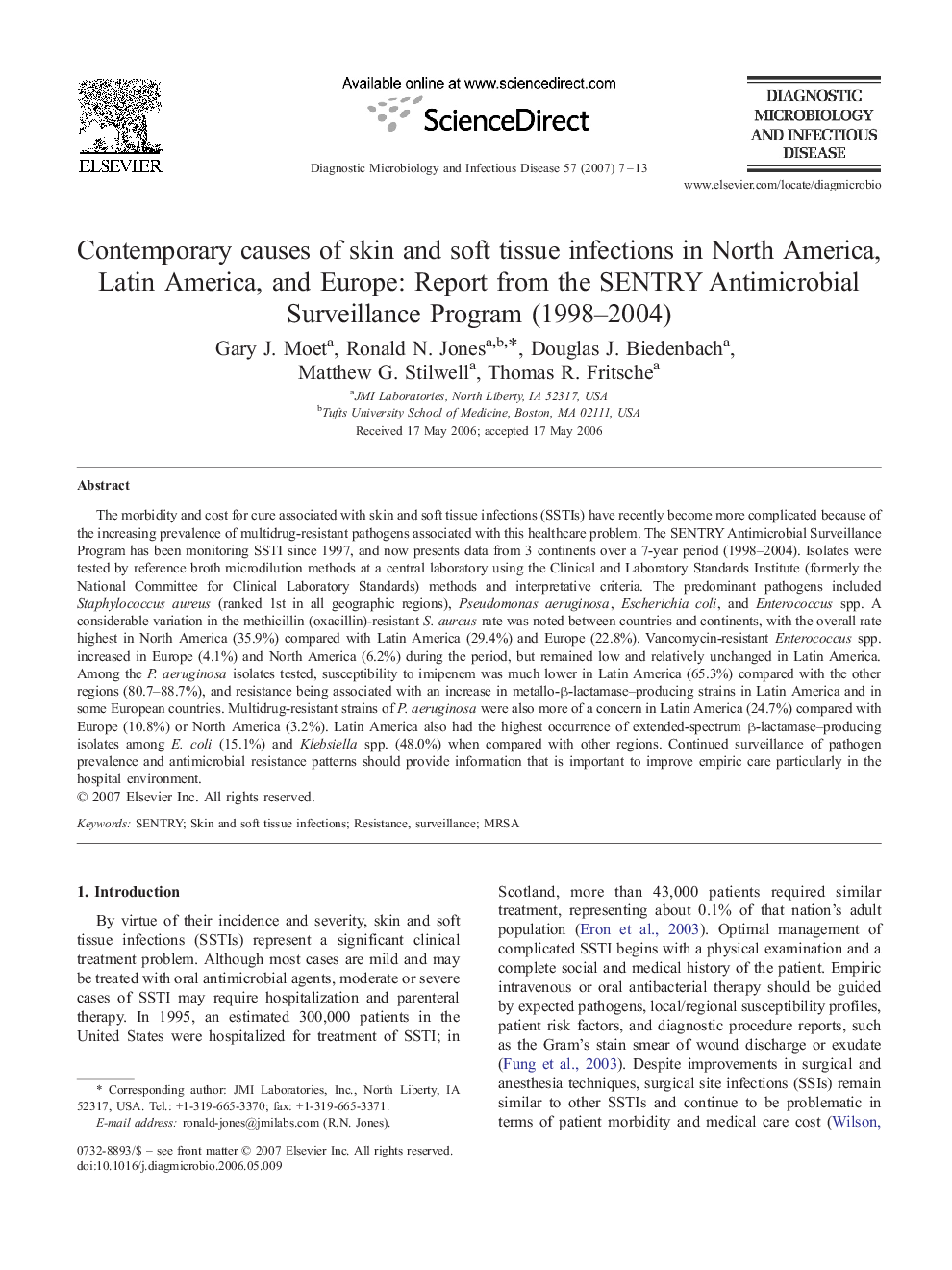| کد مقاله | کد نشریه | سال انتشار | مقاله انگلیسی | نسخه تمام متن |
|---|---|---|---|---|
| 3348435 | 1216013 | 2007 | 7 صفحه PDF | دانلود رایگان |

The morbidity and cost for cure associated with skin and soft tissue infections (SSTIs) have recently become more complicated because of the increasing prevalence of multidrug-resistant pathogens associated with this healthcare problem. The SENTRY Antimicrobial Surveillance Program has been monitoring SSTI since 1997, and now presents data from 3 continents over a 7-year period (1998–2004). Isolates were tested by reference broth microdilution methods at a central laboratory using the Clinical and Laboratory Standards Institute (formerly the National Committee for Clinical Laboratory Standards) methods and interpretative criteria. The predominant pathogens included Staphylococcus aureus (ranked 1st in all geographic regions), Pseudomonas aeruginosa, Escherichia coli, and Enterococcus spp. A considerable variation in the methicillin (oxacillin)-resistant S. aureus rate was noted between countries and continents, with the overall rate highest in North America (35.9%) compared with Latin America (29.4%) and Europe (22.8%). Vancomycin-resistant Enterococcus spp. increased in Europe (4.1%) and North America (6.2%) during the period, but remained low and relatively unchanged in Latin America. Among the P. aeruginosa isolates tested, susceptibility to imipenem was much lower in Latin America (65.3%) compared with the other regions (80.7–88.7%), and resistance being associated with an increase in metallo-β-lactamase–producing strains in Latin America and in some European countries. Multidrug-resistant strains of P. aeruginosa were also more of a concern in Latin America (24.7%) compared with Europe (10.8%) or North America (3.2%). Latin America also had the highest occurrence of extended-spectrum β-lactamase–producing isolates among E. coli (15.1%) and Klebsiella spp. (48.0%) when compared with other regions. Continued surveillance of pathogen prevalence and antimicrobial resistance patterns should provide information that is important to improve empiric care particularly in the hospital environment.
Journal: Diagnostic Microbiology and Infectious Disease - Volume 57, Issue 1, January 2007, Pages 7–13